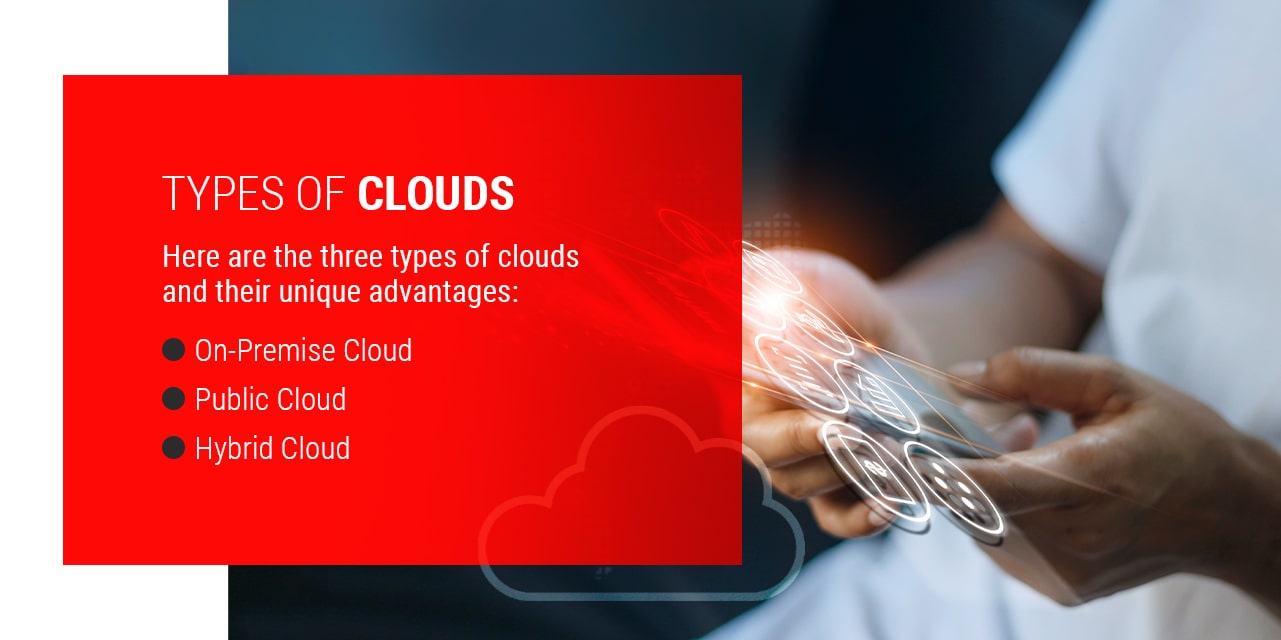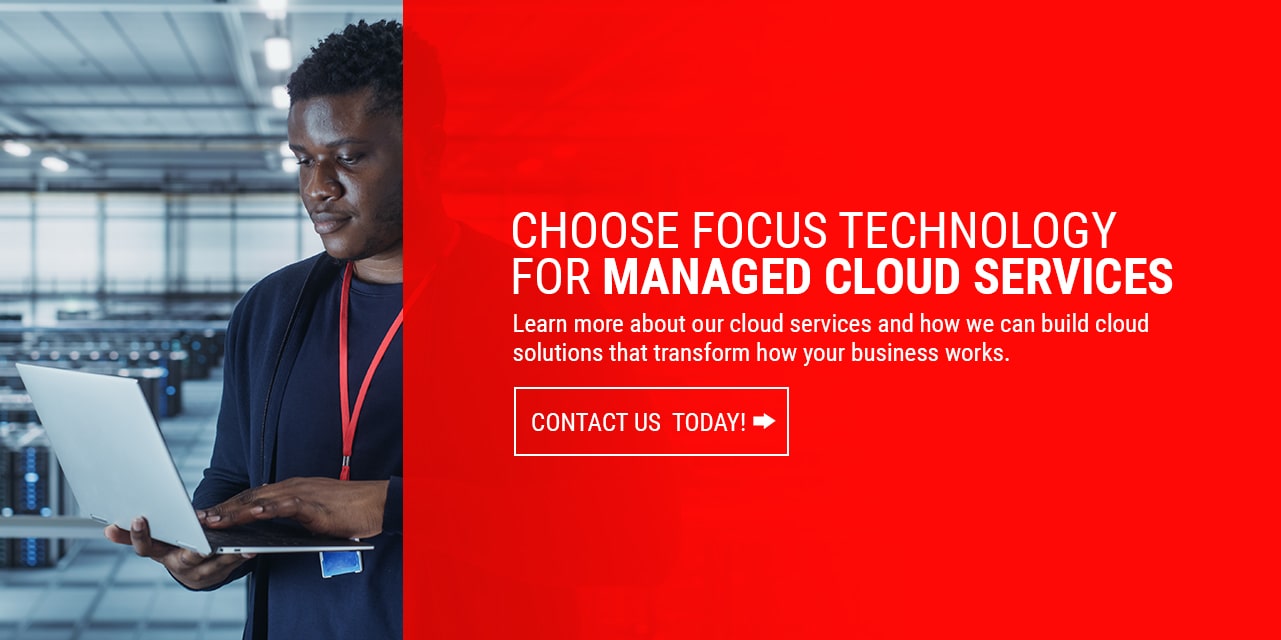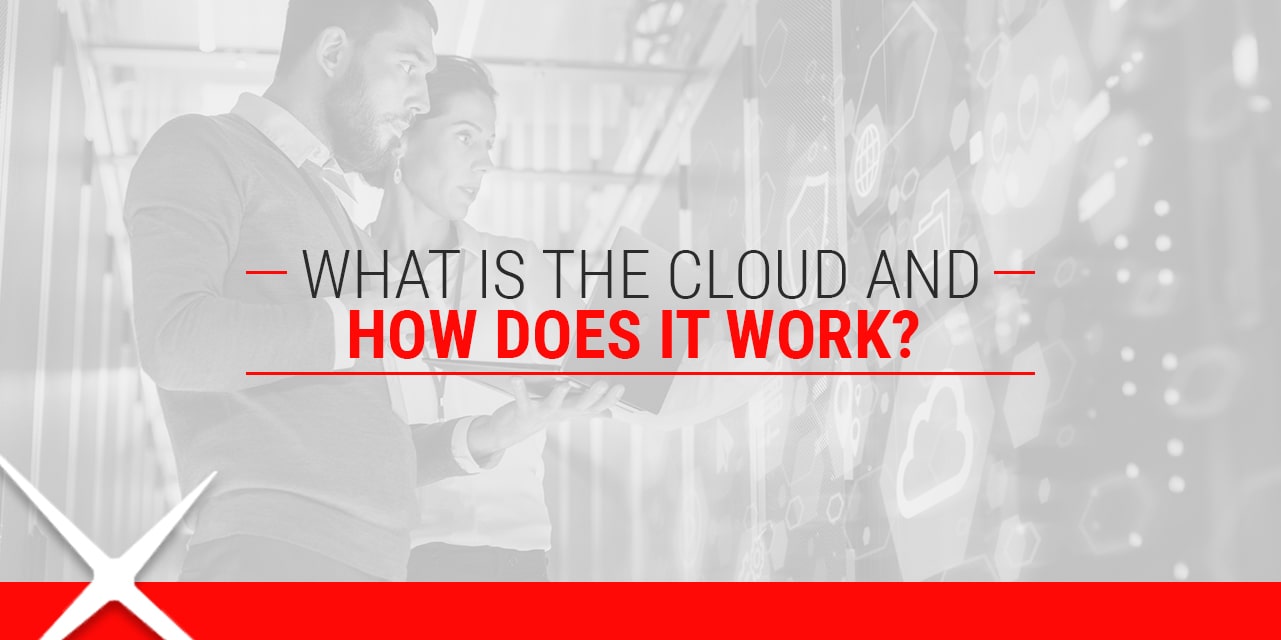Robust IT infrastructure is critical to business operations in the 21st century. Upgrading your business’s information technology (IT) infrastructure provides significant benefits, including enhanced security, productivity and efficiency. One of the significant benefits of a robust IT infrastructure is greater access to a host of cloud services that boost your business’s performance and help you strategize growth.
Whether a company wants to increase its connectivity and security or reduce its paper trail, investing in managed cloud services can help. This guide will explain what the cloud is and how it works so you can decide the best way to use the cloud in your company’s IT infrastructure.
What Is the Cloud?
When someone wonders what the cloud is and how it works, they first need to understand digital information storage. Hard drives, thumb drives and physical folders are all limited in the amount of storage they can hold. These storage devices are also susceptible to damage. In contrast, the internet can host servers, software and entire databases, all accessible virtually. This structure is called the cloud.
The cloud refers to the applications and databases that run on servers accessed through the internet. Two functions comprise the cloud — computing and storage. Both of these functions are scalable and provide several benefits for growing businesses, but they serve unique functions.
What Is Cloud Storage?
Cloud storage secures information like documents, videos, photos, etc., on remote servers hosted by third parties. Users access the server and their saved files through the internet. Many cloud service providers, both large and small, now offer cloud storage.
Because cloud service providers can store millions of gigabytes of information on one of these servers for much cheaper than they could on physical hard drives, all a business needs to do is pay a small subscription fee to use the storage. In return, the third party maintains the storage and provides backups and redundancy to protect user information if something were to happen to the data server.
What Is Cloud Computing?
Cloud computing refers to using cloud-based applications to perform computing functions. These hosted services include applications, software, networks and other processing tasks. Essentially, cloud computing refers to any cloud function besides data storage.
Using cloud computing gives you the flexibility to access your apps and programs anywhere with internet access. Third-party cloud computing services are updated regularly, so they’re always secure. Businesses usually have to pay for their user account to access the computing services.

Types of Clouds
Clouds follow three different models of delivery. Every kind of cloud uses a similar infrastructure to function, including an operating system, application programming interfaces (APIs) and a management platform. Despite these similarities, every cloud service serves different purposes. Here are the three types of clouds and their unique advantages:
1. On-Premise Cloud
Also known as private cloud solutions, on-premise cloud infrastructure restricts data access to the single company that owns it. This type of cloud model relies on the company’s physical hardware to collect data, then centralizes it on its local network. On-premise cloud storage is either managed by the organization or by a third-party service provider. This type of cloud provides additional benefits like:
- Strict security: Only the organization whose network hosts the data can access on-premise cloud storage, making this structure ideal for storing large amounts of highly sensitive and private information.
- Complete user control: Because on-premise cloud storage is collected and stored in-house, the user controls how their data is handled.
- Customization: On-premise cloud services are tailored to the company’s individual needs.
2. Public Cloud
Public clouds are created and managed by a third party that isn’t the end-user, and the cloud itself is divided between multiple tenants. The users of public clouds won’t need to maintain the system. Public cloud service providers have complete control over the cloud’s hardware, software and infrastructure. Many companies use public clouds for non-critical tasks like developing applications and sharing files. Public clouds provide:
- Ease of access: The user can easily access the cloud online. These services are also easy to deploy since the service provider already rents the server space to multiple other tenants.
- Scalable: The cost of using a public cloud is less than an on-premise cloud because there are more users and little customization.
- Flexibility: Public clouds can run virtually everything, from big data projects and enterprise operations to collaboration apps.
3. Hybrid Cloud
Hybrid cloud storage combines public and on-premise cloud types through local and private networks so they can share information and data. Usually, confidential company data is stored on the on-premise cloud, while computing and information processing tasks are assigned to the public cloud. This structure provides the benefits of both types of clouds — enhanced privacy and flexibility. Hybrid clouds offer these benefits:
- Greater user control: Users can easily control their hybrid cloud through customized features. An organization might also choose to use their public cloud as a backup if their private cloud experiences issues.
- High flexibility: The hybrid cloud structure enables businesses to personalize their storage and computing solutions by using the private and public clouds how they see fit.
- Affordability: While a hybrid cloud needs some hardware, companies can also reduce costs by relying on public clouds.
How Does the Cloud Work?
Although they have similar structures, the types of clouds all serve different functions depending on the user’s needs. So how does the cloud work exactly?
All types of clouds save data to a remote data center run by a third party. Users access and add to this database through a browser or an app on any internet-powered device. The database records the information and stores it for future use or sends it back to the user for editing. Data protection at datacenters is accomplished through redundancy and backup power supplies to ensure an outage or system failure won’t destroy information.
Benefits of Using the Cloud
The cloud has quickly become one of the top storage systems businesses use to store data. In 2022, over 60% of corporate data is stored in the cloud, and that trend seems to be growing. The popularity of the cloud is due to the many benefits it provides over traditional methods of data storage:
- Reduced overhead IT costs: By keeping their data on the cloud, businesses no longer have to manage their physical servers or run software on their machines. A managed cloud service will complete those tasks for them. This benefit is especially significant for smaller companies that don’t have the internal IT infrastructure to handle data management themselves.
- Easier international scalability: Users can access data stored in the cloud from any location in the world. This capability makes it easier for companies to expand internationally since employees across several continents can easily open and edit the same files and applications.
- Larger storage capacity: Data centers contain servers so massive they can host incredible amounts of information from users worldwide. Businesses can significantly streamline their data storage by moving everything into a virtual database and eliminating paper document storage.
- Data-driven insights: With data analytics gathered from the cloud, companies can quickly and easily gather insights that drive strategic business decisions.
- Managed IT support services: Cloud services also enable managed IT services. These service providers can collect and troubleshoot any cloud issues and provide expert help tailoring a cloud solution that serves your business.

Choose Focus Technology for Managed Cloud Services
Enlisting the help of managed service providers is like gaining an entire IT department that can boost data security and save your company the costs of operating its own cloud solutions. From designing and managing your cloud infrastructure to mitigating cybersecurity risks, a managed service provider gives you peace of mind and frees up energy you can spend on growing your business.
When you need managed cloud services to assess and manage your business data, Focus Technology’s expertise can help. Our team of IT professionals will design your cloud strategy using enterprise-grade security to enhance your business performance and reduce costs. We’ll also provide support and monitoring to ensure your service meets your needs.
Learn more about our cloud services and how we can build cloud solutions that transform how your business works. You can also contact us to discuss our cloud solutions today.
